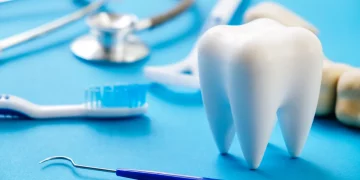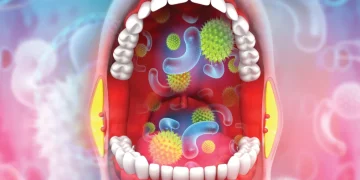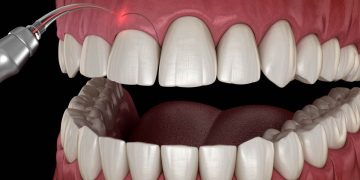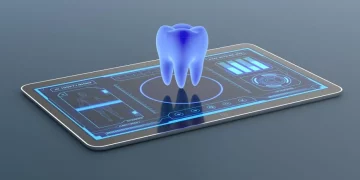We’ve all experienced it: a sudden, sharp twinge in a tooth when biting down, only to have it vanish moments later. It’s easy to dismiss these fleeting pains as sensitivity or a random occurrence. But what if this minor, intermittent annoyance is the lone whisper of a significant dental problem? Cracked Tooth Syndrome (CTS) is a notoriously elusive and often misunderstood condition that plagues dentists and patients alike. Unlike a clearly broken tooth, the fractures in CTS are often microscopic, hidden from plain sight, and their symptoms can be deceptively vague. This article delves deep into the hidden world of Cracked Tooth Syndrome, exploring the subtle symptoms people ignore, the types of cracks that cause them, and the path to diagnosis and relief.
1. The Hidden Fracture: Understanding the Types of Cracks
Not all tooth cracks are created equal. The type, direction, and depth of the crack directly dictate the symptoms you experience and the treatment you’ll need. Understanding these distinctions is the first step in recognizing CTS.
Craze Lines: These are tiny, superficial cracks that only affect the outer enamel. They are incredibly common in adult teeth and are generally considered cosmetic rather than a structural problem. Craze lines don’t cause pain and require no treatment.
Fractured Cusp: This occurs when a piece of the tooth’s chewing surface (cusp) breaks off. This often happens around a dental filling. The pain is usually manageable and occurs primarily when pressure is released from the tooth. A fractured cusp rarely affects the tooth’s pulp (where the nerves are), so it’s often repairable with a crown or onlay.
Cracked Tooth: This is the classic presentation of Cracked Tooth Syndrome. The crack begins at the chewing surface and extends vertically towards the root. The key here is that the crack has not yet reached the pulp or split the tooth into two separate segments. This is the most problematic type because the crack can “flex” during chewing, irritating the pulp inside and causing sharp, fleeting pain. If left untreated, the crack can propagate deeper.
Split Tooth: This is the natural progression of a “cracked tooth” that has been left untreated. The crack has now completely separated the tooth into two distinct segments. By this stage, the tooth is often unsalvageable and may need to be extracted.
Vertical Root Fracture: Perhaps the most insidious type, this crack starts at the root and moves upwards towards the chewing surface. It often shows minimal symptoms until the surrounding bone and gum become infected. These fractures are frequently discovered only through specialized X-rays when a persistent gum pimple (fistula) or bone loss is noted.
2. Why Your Tooth Gave Way: Uncovering the Risk Factors
A healthy tooth is remarkably resilient. So, what causes it to develop a hidden crack? It’s rarely a single event but rather a combination of factors that weaken the tooth structure over time.
Age: Simply put, teeth become more brittle with age. Decades of chewing, grinding, and exposure to temperature changes make them more susceptible to cracking.
Previous Dental Work: Large amalgam (silver) fillings, while durable, can weaken the tooth structure. They don’t bond to the tooth like modern white fillings do, and the process of placing them requires removing healthy tooth structure, which can create stress points that predispose the tooth to cracking.
Bruxism (Teeth Grinding and Clenching): This is a prime culprit. The constant, excessive force exerted during grinding, often during sleep, places immense stress on the teeth, making them far more likely to develop cracks.
Chewing Hard Objects: Habits like chewing ice, hard candies, popcorn kernels, or using your teeth as tools to open packages are a direct recipe for a dental disaster. The sudden, high-impact force on a single point can easily cause a fracture.
Trauma: An obvious blow to the face can cause an immediate crack. However, sometimes the trauma is more subtle, like a car accident from years past, the effects of which only manifest later.
Large Fillings and Uneven Bite: When a filling is large, it supports a significant amount of biting force. Over time, this can lead to cusps flexing and eventually cracking. Similarly, an uneven bite where one tooth bears the brunt of the force can lead to similar issues.

3. The Whisper Before the Break: Decoding the Pain Patterns
The symptoms of Cracked Tooth Syndrome are notoriously inconsistent, which is why patients and dentists often struggle to pinpoint the problem. People ignore these symptoms because they don’t fit the classic model of a constant, throbbing toothache.
The “Classic” Sharp Pain on Biting: The hallmark of CTS is a sharp, lancinating pain that occurs when you bite down and is often most pronounced upon release of the pressure. This happens because biting forces the crack to open slightly, irritating the pulp, and releasing allows it to snap shut, causing another sharp sensation.
Pain with Specific Foods or Temperatures: Many people report pain when eating or drinking something cold, but not always. The pain is often fleeting, disappearing as soon as the stimulus is removed. This intermittent nature makes it easy to blame “sensitivity.”
Unexplained Sensitivity or Discomfort: A general, dull ache that has no apparent cause is common. The tooth might just “feel weird” or cause a vague sense of pressure. Because the pain isn’t severe or constant, it’s easy to put off seeing a dentist.
The “Worst Toothache Ever” That Disappears: Some patients describe a cycle of experiencing a sudden, excruciating pain that then completely vanishes for days or weeks. This can lead to a false sense of security, making them believe the problem has resolved itself when, in reality, the crack has simply shifted or the pulp is dying.
Difficulty Locating the Pain: Referred pain is a significant challenge with CTS. You might feel the pain in the top tooth, but the cracked tooth is on the bottom, or the pain might seem to emanate from multiple teeth in one area. This is because the nerves in the dental pulp aren’t great at pinpointing the exact source of the problem.
4. The Dental Detective Work: Advanced Diagnosis Methods
Diagnosing a cracked tooth is often an exercise in dental detective work. A standard visual exam and routine X-rays frequently fail to reveal the microscopic fracture line.
Clinical History: The dentist will first listen carefully to your description of the pain. The story of “sharp pain on release when biting” is often the biggest clue.
Visual Inspection: The dentist will use a sharp explorer tool to feel for a “catch” on the tooth’s surface and will examine it closely under bright light, sometimes using magnification, to spot a subtle crack.
Transillumination: This is a highly effective technique where the dentist shines a very bright, focused light on the side of the tooth. A cracked tooth will block the transmission of this light, creating a distinct dark line where the crack is located.
Bite Test (Tooth Slooth): This is the most definitive clinical test. You will be asked to bite down on a small, plastic, stick-like device called a “Tooth Slooth” or a folded piece of rubber. By applying pressure to individual cusps of the tooth, the dentist can reproduce your exact pain, confirming both the diagnosis and the specific part of the tooth that is fractured.
Dye Stain: A special disclosing dye can be applied to the tooth. This dye can seep into the microscopic crack, making it visible to the naked eye.
Dental Microscope: In complex cases, an endodontist (root canal specialist) may use a dental operating microscope to visualize the crack with high magnification and illumination.
Cone Beam Computed Tomography (CBCT): While traditional 2D X-rays often miss cracks that run parallel to the beam, a 3D CBCT scan can sometimes reveal the fracture line, especially in the root. It is an invaluable tool for diagnosing vertical root fractures.
5. Saving the Tooth: A Guide to Modern Treatment Options
The goal of treatment is to bind the tooth together and prevent the crack from propagating further. The chosen treatment depends entirely on the type, location, and extent of the crack.
Bonding: For very small, superficial cracks that are causing minor sensitivity, the dentist may simply etch the crack and flow a tooth-colored resin into it. This can seal the fracture and relieve symptoms, but it is not a strong solution for larger cracks.
Dental Crown (Cap): This is the most common and effective treatment for a true Cracked Tooth. A crown is a custom-made covering that encases the entire tooth. By holding the tooth together like a barrel held together with metal hoops, a crown prevents the crack from flexing during chewing, thus eliminating the pain and protecting the tooth from further damage.
Root Canal Therapy: If the crack has extended deep enough to infect or irreversibly inflame the pulp (the nerve tissue), a root canal is necessary before placing a crown. This procedure removes the damaged pulp, cleans the inside of the tooth, and seals it. It relieves the pain caused by pulpitis but does not, by itself, stabilize the crack. A crown is almost always mandatory after a root canal on a cracked tooth.
Tooth Extraction: When the crack extends below the gum line and into the root (a “split tooth” or a vertical root fracture with a poor prognosis), the tooth often cannot be saved. Extraction is the only option to resolve the infection and pain. Following extraction, the tooth can be replaced with a dental implant, bridge, or partial denture.
No Treatment (Monitoring): For harmless craze lines, no treatment is needed. For a very minor crack with minimal symptoms, a dentist might sometimes recommend a “wait and watch” approach, but this is rare as cracks typically worsen over time.
The intermittent, confusing pain of Cracked Tooth Syndrome is not something to be ignored. Dismissing that sharp twinge when you bite into an apple or that unexplained sensitivity to cold as “just one of those things” can lead to a much more serious dental situation down the line, potentially resulting in the loss of the tooth. If you recognize any of these subtle symptoms, the most important step you can take is to visit your dentist. Be a detailed storyteller—describe exactly when the pain happens, what it feels like, and what makes it stop. By acting as a partner in your dental detective work, you can help your dentist uncover the hidden fracture and save your tooth before it’s too late.













































Discussion about this post